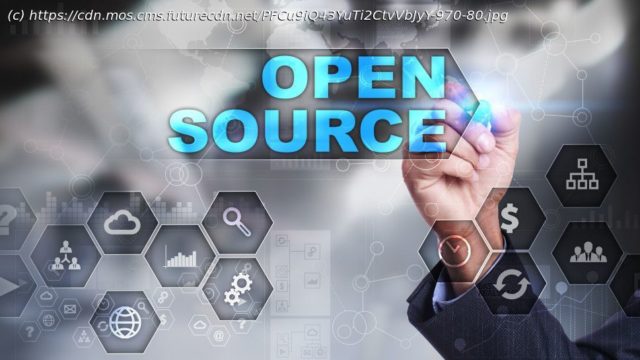A tribute to the unknown warriors of open source
In 1940 British Prime Minister Winston Churchill delivered a rousing wartime speech. His words were weaponized to give heart to the Royal Air Force and Allies who were fighting the Battle of Britain.
Churchill’s words still ring through the ages, especially in any situation where the hopes and dreams of the majority hang on the effort of a few heroes – and this is perhaps particularly relevant in the tech landscape, which relies heavily on open source software.
These are computer programs and components whose source code is freely available – to be examined, modified and even redistributed.
By making the decision to open source a project, developers run the risk that they won’t make any profit for it. Still, thousands of coders around the world regularly give up their free time and pass up better paid work in order to develop and maintain open source code.
Open source is everywhere. In 2023 SynopSys released a comprehensive report using its KnowledgeBase, which contains information for nearly 200 million versions of over 5.1 million open source components that use data from more than 26,000 unique sources.
The report found that open source is so pervasive that most developers these days don’t even know all the open source components in their own software.
Of 1,700 codebases across 17 industries, 76% was open source and almost all codebases (96%) contained at least some open source software.
If developers from major companies like NASA rely so much on open source components (sometimes unknowingly), this begs the question: what would the impact be on critical initiatives like the International Space Station without such software?Victory at all costs
As much as we rely on open source, there’s little chance of the ISS falling from the sky or the entire internet crashing due to a dearth of developers.
This is due to the guiding principles of open source, which foster sharing knowledge and collaborating on code.
This hasn’t always been the case. In the USA the 1976 Copyright Act led most manufacturers to stop releasing their products’ source code, so they couldn’t be run on competitor’s devices.
As Richard Stallman, a programmer at MIT Artificial Intelligence Laboratory discovered, this had a number of unintended consequences:
“When I started working at the MIT Artificial Intelligence Lab in 1971, I became part of a software-sharing community that had existed for many years. Sharing of software was not limited to our particular community; it is as old as computers, just as sharing of recipes is as old as cooking. But we did it more than most.”
Speaking on gnu.org, Stallman clarifies that at that time the AI Lab used a timesharing operating system called ITS that the lab staff “hackers” had designed and written in assembler language for the Digital PDP-10, one of the large computers of the era.
Stallman’s role as an AI Lab staff system hacker was to improve this system and he noted, “If you saw someone using an unfamiliar and interesting program, you could always ask to see the source code, so that you could read it, change it, or cannibalize parts of it to make a new program.”
At the time these new programs weren’t known as “free software” or “open source” as such terms didn’t exist.
The introduction of the Copyright Act changed the tech landscape for the worse. By the early Eighties the PDP-10 (and therefore all programs associated with it) had become obsolete.
The more modern computers of the era, such as the VAX series or the Motorola 68020, had proprietary operating systems, which required team members to sign a nondisclosure agreement even to obtain an executable copy.
Things came to a head in 1980 when Stallman was refused a copy of the source code for the lab’s newly installed Xerox 9700 laser printer.
As he’d had access to the program for the previous XGP printer, Stallman had been able to make life easier for the team by modifying the code to generate special alerts when printing was completed or when there was a paper jam. This was much more convenient, given that in those days printers could take up an entire floor.
Stallman was faced with what he called a “stark moral choice” between shutting up and signing the NDA or taking a stand:
“The answer was clear: what was needed first was an operating system. With a free operating system, we could again have a community of cooperating hackers—and invite anyone to join. And anyone would be able to use a computer without starting out by conspiring to deprive his or her friends.”Freedom, Justice, Honor
In January 1984 Stallman quit his job at MIT and began writing GNU software. This recursive acronym stands for “GNU is Not Unix”. This reflects his attempts to create an operating system and associated programs which were compatible with Unix but based on open source principles.
Soon after, he started a non-profit corporation called the Free Software Foundation to employ programmers and provide a legal infrastructure for the free software movement.
Besides working on a number of open source tools such as the text editor GNU Emacs, Stallman championed the principle of “Copyleft”. In 1989 the first GPL (GNU General Public License) was released, which details a user’s rights and obligations for programs released under the GPL. These include the right to use and modify the program, provided any derivatives and their source code are made available to others under the same license.
Crucially, this prevents bad actors from simply turning open source code into closed, proprietary software. The GPL license also does not deprive developers from making money from open source programs.
For instance, though the source code for Emacs was freely available Stallman was able to make money by having interested users mail him a self-addressed envelope and a cheque for $150 to obtain a physical copy of the program.A kernel of truth
Throughout the 1980’s the FSF had great success in creating equivalent open source applications for their Unix counterparts. However, they had considerably less success with Stallman’s original goal of creating a fully fledged operating system.
In order to run, applications require a ‘kernel’, which sits at the core of the operating system and allocates resources to them.






